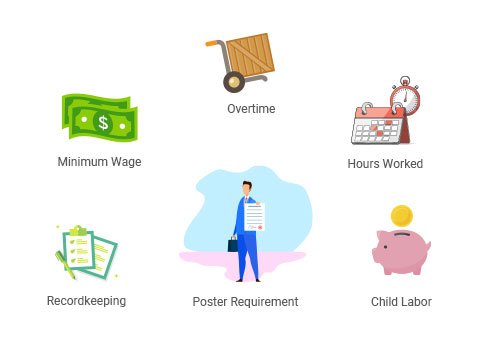As the entire world continues to digitalize, recruiters, managers, and other HR personnel need to have the right tech skills in their armory. Whether it is working on the go with tablets and smartphones, sharing and storing information through the cloud, or interacting with people on social media platforms, being tech-savvy is no longer a bonus but a fundamental requirement for any HR professional.
HR professionals handle a number of personnel-related demands for their organizations, including:
- Finding and recruiting the right employees
- Managing training and on-boarding for new recruits
- Tracking attendance, holidays, and payroll records
- Handling employees’ professional or even personal issues
- Letting go of employees not delivering satisfactory results
- Trying to retain valuable employees should they give notice
Modern tech can simplify these and other responsibilities and tasks, but only if you know which tools to use and how. In this blog, we will discuss the tech skills that are non-negotiable for HR professionals operating in 2022.
Must-Have Technology Skills for Every HR Professional in 2022
1) HR Software
There are a number of HR software programs that can help HR departments function in a more organized and efficient manner. Such software programs are essentially employee-management systems that allocate personal and professional data to each worker.
With an increasing number of companies relying on technology for the better management of employee data, not being familiar with HR software programs could put you at a disadvantage during your job hunt. Being familiar with these programs shows employers that you can incorporate this tech into their HR department. Or, if your prospective employer already has an HR software system, it shows that you already have experience with these programs and would be able to start using them right away.
2) Social Media Platforms
Social media platforms like Twitter, LinkedIn, Facebook, and Instagram have become an integral aspect of business networking in 2022. Hence, you should not only be familiar with these platforms, but also be able to use them for the below purposes:
- Sharing information about the job openings on the company’s pages and profiles, and encouraging employees to share these posts in order to reach out to a greater number of candidates
- Assessing your prospective candidates’ public posts and social media profiles to try and determine if they are a good fit for the organization
- Using social media to announce any upcoming events can help improve your brand’s image and visibility
3) Talent Management Systems
Talent management systems are software programs that ease the recruitment process for new hires, and help managers manage and record the new employees’ performances and their contributions to the organization.
This is an excellent skill to have, particularly for people looking for positions in HR planning or HR management departments, because it shows an ability to use tech to find, recruit, monitor, and retain top talent for the organization.
4) Human Resources Information System
A Human Resource Information System (HRIS) can streamline a number of HR processes and tasks, and also help cut down on manual errors. Below are a few benefits of such a software program:
- Reduces paperwork
By allowing you to fill out forms online and store documents electronically, an HRIS can reduce the hassle of filing, storing, and maintaining paperwork.
- Improves efficiency
Automation of payroll and other HR processes improves your team’s efficiency and productivity, saving both time and money for your organization.
- Improves compliance
Documents stored and filled digitally are easier to complete, secure, and retrieve when required. This helps minimize compliance-related issues.
5) Talent Acquisition Software
Talent acquisition software – also referred to as an Applicant Tracking System (ATS) –can significantly improve an organization’s recruitment and hiring process. Here is how:
- If your company’s ATS is integrated with its social media profiles, you can easily share openings across multiple job boards, social networking sites, and career pages through a single platform
- Automated candidate screening, resume parsing, and interview scheduling significantly reduces the manual workload for hiring managers and recruiters
- Smart filters allow you to quickly shortlist the most suitable candidates, leaving you with more time and energy for conducting interviews and finding the best fit for your organization
- By automating tasks like job posting, interview reminders, and other communication, an ATS can help reduce both personnel-related and administrative costs
6) Cloud Technology
Since almost the entire recruiting process is being completed online, it is important to be familiar with cloud-based pre-selection systems, applicant tracking systems, and other HR tools. Below are a few HR-related applications of cloud technology:
- Centralization of business and HR data makes it easier to manage and organize things like onboarding, feedback, and payroll
- Having employee and candidate data in a single location reduces turnaround times by doing away with the need for back-and-forth communication between departments
- Cloud-based HR systems help improve transparency and communication within an organization, leading to higher employee engagement, satisfaction, and, consequently, retention
- With best practices, policies, and performance metrics on the cloud, you can boost consistency and uniformity across the organization, even in different locations
7) Talent Management Software
Talent Management Software (TMS) helps streamline the recruitment, onboarding, and training and development processes in the following ways:
- TMS-driven data allows you to make more informed and strategic decisions with respect to long-term talent acquisition and HR goals
- Monitoring employee performance feedback and reviews, along with their skills and career goals, puts you in a better position to retain your most valuable employees
- Analyzing TMS data helps you better plan promotions, or provide development and training opportunities to employees who need it
- By automating data collection, a TMS helps catalyze the onboarding process and also cuts down on the time-to-hire
Wrapping Up
To become an effective and capable HR professional in 2022, befriending the above tech and tools is no longer optional.
Employers are constantly on the lookout for tech-savvy HR professionals and, the more you equip yourself with the latest technology and software, the more value you can add to your organization’s human resource department and operations.





















